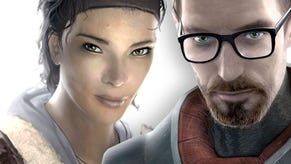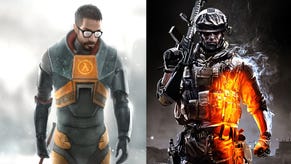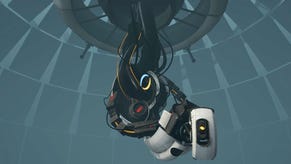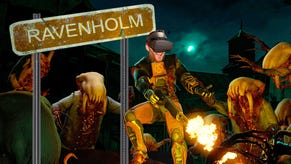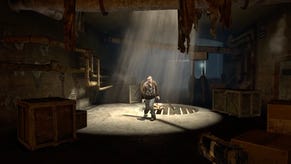Half-Life 2
Console yourself, it's finally here.
One of the central problems of the first person shooter is we've pretty much been there, done that so many times, we're a little travel-weary. It's not so much a case of having the T-shirt, as having a bin bag full of XL ones.
Half-Life 2's initial arrival almost exactly a year ago on PC certainly didn't reinvent the wheel as many expected and demanded, but it grabbed hold of the stagnant genre with a gravity gun and purposefully thrust it into a compelling new direction. The wonderful Source engine not only looked truly next-generation (fully 12 months ahead of time) with hugely impressive character models and wonderfully immersive environments, but its innovative use of physics allowed Valve to give us new toys to play with and come up with new gameplay possibilities into the bargain.
But technology can only dazzle a gamer for so long. Eventually it has to have substance behind the glitz and justify the hype. For the most part it did just that - constantly surprising the gamer and reinventing itself with a seamless adventure that is as memorable an FPS as there has ever been. This constant evolution was consistently underpinned by Valve's masterfully understated storytelling techniques, wry, self-referential humour, warm characterisation and some of the most epic scenarios gamers have ever been pitted against. Despite some of its flaws, Half-Life 2 remains a thrilling sci-fi road trip that provides a tantalising glimpse of the possibilities of gaming.
Combine harvester

Inevitably, despite being among the three most entertaining games of last year, it wasn't perfect. Take the pacing, for example. The gloriously atmospheric opening City 17 section passes in mere minutes, giving way to the over-long Route Kanal and Water Hazard chapters that mark an early low-point in the proceedings. Only when you reach Ravenholm does the game start to realise its epic potential. From there you're running on pure adrenaline, chopping Headcrab Zombies in half with circular saw blades, lobbing explosive barrels with the gravity gun, duking it out with giant Antlions, dodging matter-distorting blasts from 50 foot-tall Striders and sticking it to the Combine masses. And just when you're about to reflect on one of the best games ever made, a bafflingly unbalanced and undercooked conclusion leaves you with a gigantic anticlimax to mull over.
Looking back, it's clear that it wasn't just the ending that could have been better. The AI - both enemy and buddy - left many players feeling rather unsatisfied. After the original Half-Life re-wrote the rulebook in '98 we were right to expect boundary-breaking routines that would leave the competition for dust. What we got, though, were gung-ho encounters with enemies all-to-content to rush towards you leaving them easily exposed to your fire. Meanwhile, the regular arrival of buddy AI helpers were rarely as useful as you wanted them to be, and never survived long enough for you to get attached to them. Such issues didn't become big enough to spoil the enjoyment overall, but there was still an unpalatable, lingering sense of unrealised potential.
The story, too, didn't quite feel as fleshed out as it deserved to be. With such a huge, beautiful environment to explore and so many questions left hanging in the air, there were innumerable opportunities for Valve to pepper every nook and cranny with hidden clues for the determined traveller to discover, yet by and large the world was bereft of incentives to poke around, Metroid Prime-style. Maybe that was the point. Valve is almost as big an enigma as the games it makes, but to create such a grippingly atmospheric and immersive world and then leave it so deserted was strangely unsatisfying - and decidedly last gen.
Soaked

Playing it all over again gave us the perfect opportunity to see if these issues held true. Often it's easy to over-emphasise niggling issues into gigantic problems to fit your argument, while simultaneously missing all the wondrous things that make it a classic for everyone else. Certainly, playing it on a high-end PC in pin-sharp quality was a big part of the experience. Stripping away those layers for the Xbox version does rather remove some of the wide-eyed awe we got 12 months ago. A good number of hours were spent back then just soaking it all up; wandering City 17 listening to the propaganda broadcasts, talking to everyone, pushing and pulling everything, throwing TVs out of the window just because we could. This time... this time we just played the game.
With all the faffing around, it took us about nine hours just to get to Ravenholm last time. This time: just over three. This time we played the Xbox version like we play most games, and found it to be a quite different experience.
But that's not to say the gameplay's any different at all. It's not. As a game, it's practically identical in every single way that matters. There are no edits, no additions, no sneaky surprises, no dumbed-down sections for the console audience. This is the undiluted Half-Life 2 experience, and for that Xbox owners should be grateful.
For once, this Xbox port has been handled in-house, too, unlike so many console ports that have gone before. But while Valve has limited console expertise, it's pushing the Xbox like you wouldn't believe - though it does come at a price. That price is, predictably, in terms of the lower resolution, lower texture detail and lower frame rate, which dips to wince-worthy levels on a few notable occasions. But even so, the vast majority of the time, the Xbox runs exceptionally smoothly and displays some of the most incredible visuals anyone has attempted on the four-year-old box. That Valve has managed to squeeze so much and resort to so few compromises is a massive feat. Clicking down the right stick and filling the entire screen with someone's face is as impressive as it ever was, and as a spectacle it's damned near one of the best looking games console gaming has been treated to.
Satisfiction
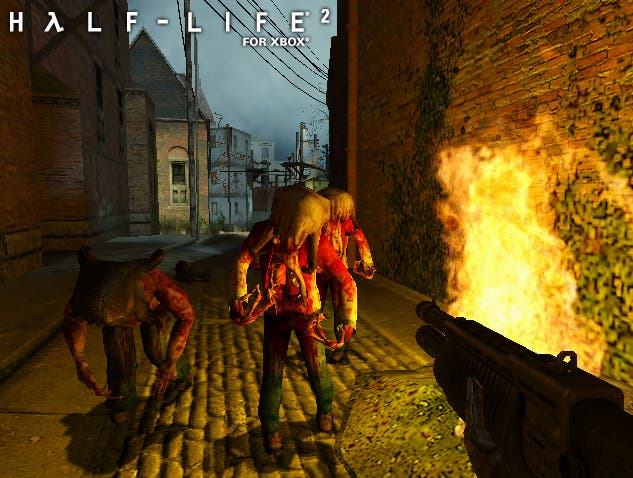
Even so, we were fully expecting the physics to be far less impressive, yet everything you saw in the PC original makes an appearance here. The vehicle sections feel fluid and slick, the targeting is slightly generous in terms of auto aim (so therefore feels a slightly easier games as a result), but overall feels as assured an FPS as we've ever come across on a console. If you feel like other console FPSs have let you down in terms of their controls, then give this a try. Valve has got it spot on, both in terms of the sensitivity, and the general control layout. Take the weapons-select, for example. With the d-pad assigned to your entire arsenal, you can now switch between weapons in a split second, which is something too few console FPSs can boast.
Loading times are remarkably swift, too, pausing the game for less than 15 seconds at a time at more than tolerable intervals. Checkpointing is automatic, as is reloading, meaning less irritating save/load shenanigans than you would otherwise find on a stop-start game such as this. On the other hand, it's still a game that relies upon your own diligence to save regularly. A checkpoint save may appear when you're on 3 health points, and progress may be impossible unless you go back to your previous 'proper' save game (which in itself might be half an hour ago). Even so, it's handled better than many, while still retaining the ability to quick-save whenever you fancy.
The one notable fly in the ointment is the lack of any multiplayer whatsoever. Given that Counter-Strike: Source was free with the PC version, it would have been more than logical to extend the same courtesy to Xbox owners - especially as the main dish is likely to only last 12 to 15 hours. When you factor in the lack of the gravity gun-tastic Half-Life 2 multiplayer matches, it seems incredible that Valve could be so mean to leave both out entirely, especially given the fact that the Xbox version actually costs more than the PC original. It's not a deal-breaker, but we're quite sure many Xbox owners will have preferred at least some sort of online multiplayer - especially given the huge popularity of Halo 2's online mode.
Frown Source
Whether you'll want to overlook such niggling issues will come down to how important the lack of a multiplayer mode is to you. Given that about 98 per cent of European Xbox owners aren't Live subscribers, we'd suspect that - for most of you - it's not the biggest issue in the world. As a single-player experience, even in its slightly compromised state, it's easily one of the most intensely enjoyable console shooters there's ever been. While we'd agree that many of the criticisms levelled at Valve's epic are completely valid, the broader context is that missing out on the opportunity to play Half-Life 2 would be a dereliction of duty to buy and play the very best games around; only this time you can get Steam-ed up about it for all the right reasons.



